How to build an app like Uber: Steps, Features, and Costs
- A step-by-step guide on how to make an app for cab booking
- How to make a winning taxi booking app
- How to monetize taxi-hailing apps
- How to build a taxi app like Uber?
- How much will your taxi app cost?
- How much does it cost to develop an app like Uber?
- Main pitfalls in taxi app development
- Developing the best taxi solution that rules the market
You can’t imagine a successful ridesharing business without an Uber-like app for taxi-hailing. And here is why. Taxi service apps have almost replaced traditional ride-hailing services and are here to stay. Today, mobile apps are a must for existing taxi business owners and startups that want to offer taxi booking services. Unfortunately, to win the competition, an app is not enough.
Once you join the taxi industry, you’ll face sharp competition. You’ll need to compete with Uber and Lyft cab booking apps that have millions of active users and billions of dollars in revenue.
But there is a solution. To become successful, you need to give users a reason to choose your cab booking app over competitors. In other words, your taxi booking service needs a strong and well-recognized brand with a persuasive value proposition.
Another key to success for a taxi app solution is a reliable tech partner – an app development company that knows everything about taxi app development and related technologies.
Let’s talk about strategies to compete with Uber, revenue models for a taxi app, and core features to add to your project. We will also estimate an Uber app development cost and share the pitfalls we faced during the ride-sharing app development.
But first, let’s see a bigger picture of the taxi booking app development process.
UBER FOR TRUCKS APP DEVELOPMENT: ESSENTIAL FEATURES AND COSTS
A step-by-step guide on how to make an app for cab booking
Step 1. Offer a unique value proposition
Your mobile app for a taxi should offer unique values to both drivers and passengers.
Step 2. Find your Niche
You need to find a niche in the taxi booking app market with low competition.
Step 3. Chose the revenue model
You need to decide whether to charge commissions or run paid promotions.
Step 4. Shape your vision
You need to gather requirements for your project and show them to the taxi mobile app development team.
Step 5. Create a taxi booking app technical documentation
The team creates a technical specification for your app, writes user stories, suggests the architecture, and applies tech stack.
Step 6. Develop your Uber-like app’s MVP
Taxi app developers implement user stories based on their priority and conduct unit testing to find and fix errors.
Now, let’s look at each step in more detail.
UBER FOR PRIVATE JETS: HOW MOBILE TECHNOLOGIES CAN SOLVE PRIVATE AVIATION PROBLEMS
How to make a winning taxi booking app
As we said, the ridesharing market has strong competitors. Uber and Lyft cab booking apps are the largest companies in this sector. In June 2020, Uber had 70% of the market, while Lyft’s market share is only 30%.
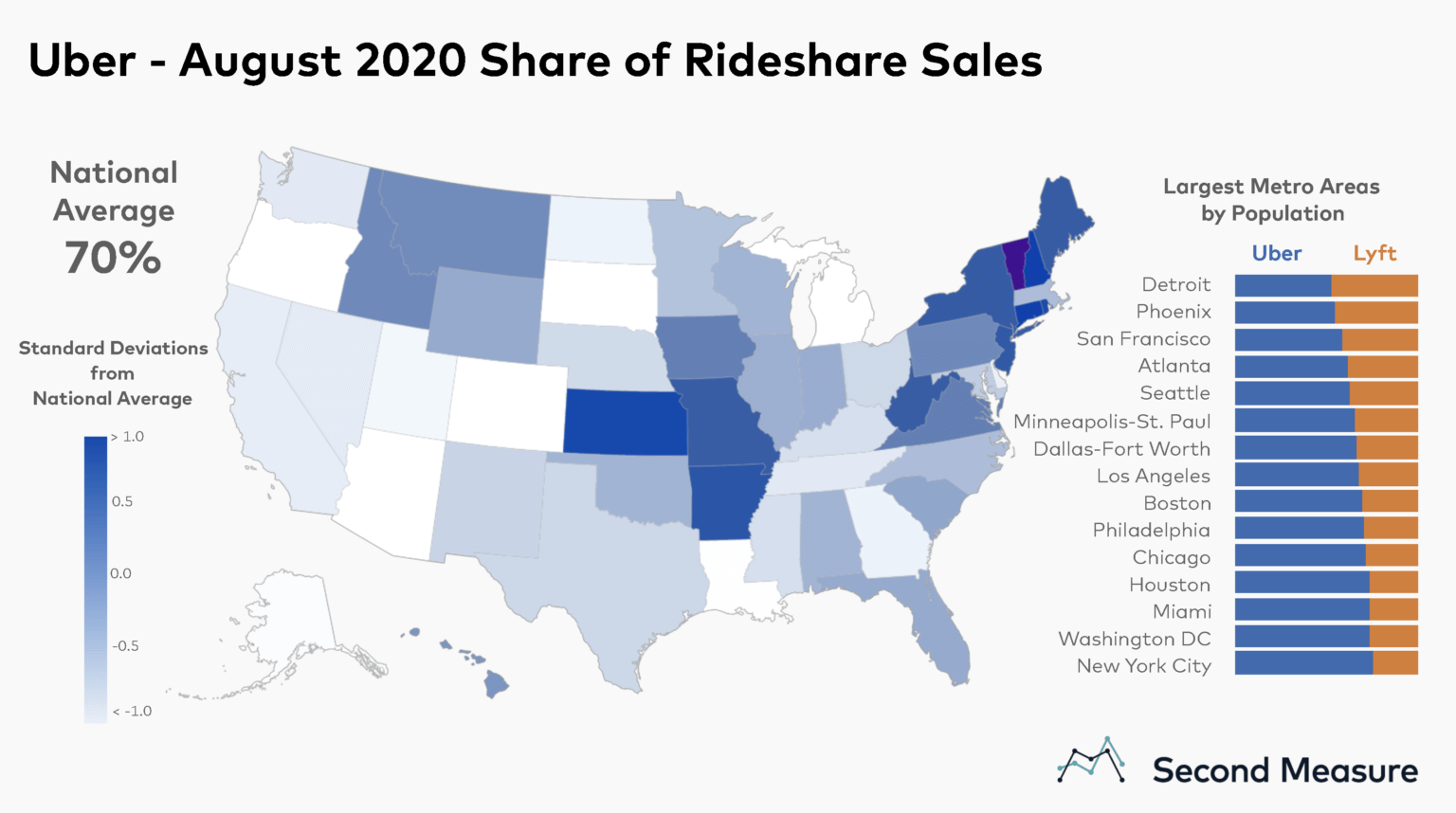
But, believe us, your new mobile app for taxi services can become successful even in a competitive market.
Let’s see how.
Offer a unique value proposition
To build a strong brand and differentiate your taxi booking app from competitors, you need a unique value proposition. Another function of a value proposition is to make your Uber-like taxi app attractive for both drivers and riders. To find your value proposition, let’s analyze what your competitors offer.
Uber
Uber is the most significant player in the taxi app market. This taxi booking app is available in 67 countries, 78 cities, and counts 55 million active monthly users.
Uber has two value propositions:
- Hassle-Free and Fast Riding
- Affordable Pricing
While the first value proposition emphasizes the convenience of using the app, the second statement says that Uber has a reasonable pricing policy to make taxi services available for anyone, which is true. Uber was the first taxi service that charges ride prices depending on the distance, instead of charging a flat rate.
UBER API INTEGRATION: A STEP-BY-STEP GUIDE
Lyft
Lyft is the second-largest taxi booking app. Unlike Uber’s global presence, Lyft only operates in the U.S. (65 cities in 30 states). Lyft’s brand has two distinct value propositions:
- Ride in minutes
- Take a wheel
The first value proposition is for passengers who are looking for a taxi in a short time, and the second one is for drivers who want to join Lyft’s fleet to earn from driving passengers.
Have you noticed that both apps for taxi service use a sense of urgency without emphasizing the passenger’s status, car preferences, or belonging to a particular community?
The taxi booking app that built its value proposition around status and luxury is HYPR, a London-based start-up. HYPR’s value proposition sounds like:
- Luxury Ride-Hailing Club
In this way, HYPR gives users a sense of belonging to an elite community of wealthy and successful people. And HYPR meets users’ expectations.
The company has a fleet of luxury cars, including Lamborghini and Gelentwagen, and operates on a subscription basis.
To receive an HYPR passenger app access, you should fill in the application form and wait on the waitlist. Another option is to get an invitation code from an existing HYPR’s client.
In a nutshell, to build your brand, don’t try to copy other taxi service apps. Instead, find something that will make your app for taxi service unique, express it into words, and bingo! Congratulations, you just created a unique value proposition.
HOW TO BUILD A FOOD DELIVERY APP LIKE UBEREATS
Taxi App Development Free E-Book
Download nowOne more method that ensures taxi business success is to occupy a niche with little competition.
Find your niche
At first glance, there is only one niche in the taxi industry. This is not correct.
For instance, there is a niche of electric car taxis that could work for your taxi booking app. Why?
Now, people are more concerned with ecological issues than ever before. Thus, they make conscious choices toward an environmentally-friendly means of transport.
One example is Green Cabs Taxis, a leading New Zealand environmentally-friendly car booking application. The company positions itself as guilt-free because they use electric vehicles and add tree-planting donations into each fare.
Another prominent niche is alternative vehicles, such as motorbikes. It has low competition because offering an on-demand bike taxi is, at least, unusual.
Let’s take a look at successful taxi applications that offer bike hailing services:
- GrabBike, an on-demand bike service provider, operates across Thailand and has 5,997,330 reviews in Google Play. Apart from ordering bikes, GrabBike users can send packages and documents with bike drivers.
- Rapido bike taxi service is available in 40 cities across India. The app counts over 2 Million app users and 10+ million rides.
- LimeBike, the London-based motorbike riding service provider, promises clients the fastest route to and from the airport and the safest way to travel in the city.
On-demand bike taxis are also available in Brazil, China, Pakistan, and the USA. But only a few have an app to summon a bike. Thus, if you are from the above-mentioned countries, you have a chance to launch the first bike taxi app and make it successful.
Expand to other countries
When thinking about making a cab services app you should not limit your idea to your country’s borders. Why?
Fortunately, there are countries where Uber isn’t available or partially banned for some reason. Denmark, Hungary, Thailand, Canada, to name a few.
This means that these countries have perfect market opportunities for your taxi-hailing services.
Here is a map with countries to consider for launching your cab service app.
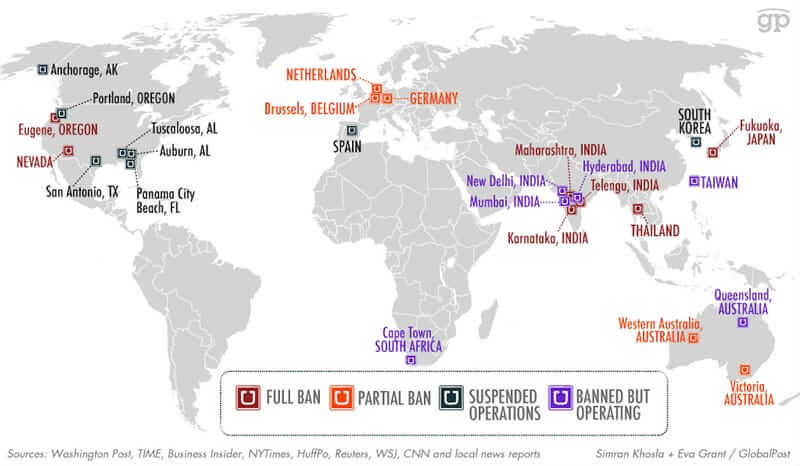
Now, let’s see how your app for a taxi could bring you money.
How to monetize taxi-hailing apps
In order to turn a taxi booking application into a money-making business, you can apply the following methods:
- Commission from passengers. You can charge passengers a service commission fee between 20-25% of the total ride cost.
- Service fees. You can charge passengers a flat booking rate and additional service fees for security, service, and payment processing.
- Cancellation fees. You can set this type of payment as a penalty in case the passenger cancels a ride.
- Third-party promotions. One example is Uber, which makes money from promotional collaboration with famous brands (Hilton, Pepsi, and Spotify). While Uber receives promotion fees, brands interact with app users, and users receive benefits, gifts, and treats from branded marketing campaigns.
- Advertising. For running advertisements in your booking taxi app, you can charge a cost-per-click or cost-per-impression commission.
With a unique value proposition and business model at hand, you need to contact the development team and ask them to create a taxi app.
How to build a taxi app like Uber?
The development of taxi apps like Uber requires a taxi app creator to go through the following stages:
Create a project vision
People develop mobile applications to solve particular problems users have. Therefore, to create a successful taxi application you need to know for whom you are going to develop a mobile application, what issues users have, and how technologies can solve them. Such knowledge is called a project vision.
If you don’t have a clear project vision for a taxi app like Uber, you need to participate in a Workshop, a short (2-8 hours) brainstorming session with our development team.
We’ll help you shape and validate your business idea during the Workshop. We will also create a bullet-prove project vision for a taxi book app, suggest available technologies, and make a more personalized commercial offer.
WHAT TECH STACK TO CHOOSE FOR YOUR PROJECT
How much will your taxi app cost?
Develop a taxi app technical documentation
Technical documentation is a must for every project. It tells taxi app developers what system they are about to build. Since our customers do not have a written tech document, we create it in-house during the Inception or Discovery phase.
The Discovery phase helps developers to define what your project should and shouldn’t do, write use cases and user stories, and define functional and business requirements. At the end of the Discovery phase, you will receive the project’s technical documentation, clickable app prototype, and technologies to apply.
Related reading: How to Integrate Uber API to your app
Develop a mobile taxi app’s MVP
An MVP (minimum variable project) is the app’s first version. It includes only essential functionality, sufficient for users to install the app and rank it.
We prioritize functionality for the app’s MVP during the Inception phase when technical documentation is ready.
Thanks to MVP, startups can launch taxi booking apps without spending extra resources, and add other features later.
Related reading: How The APP Solution Works: from Pre-sale to Project Release
Now, let’s see what features to pick for the MVP of a taxi-hailing platform.
The core functionality to power-up mobile taxi apps: Our Case Study
An app like Uber will consist of three essential elements. They are the driver app, a passenger app, and a dispatch web-based panel to manage both types of users, payments, and rides.
Below we share an estimation in hours for taxi-hailing platform development with basic functionality.
Passenger app features
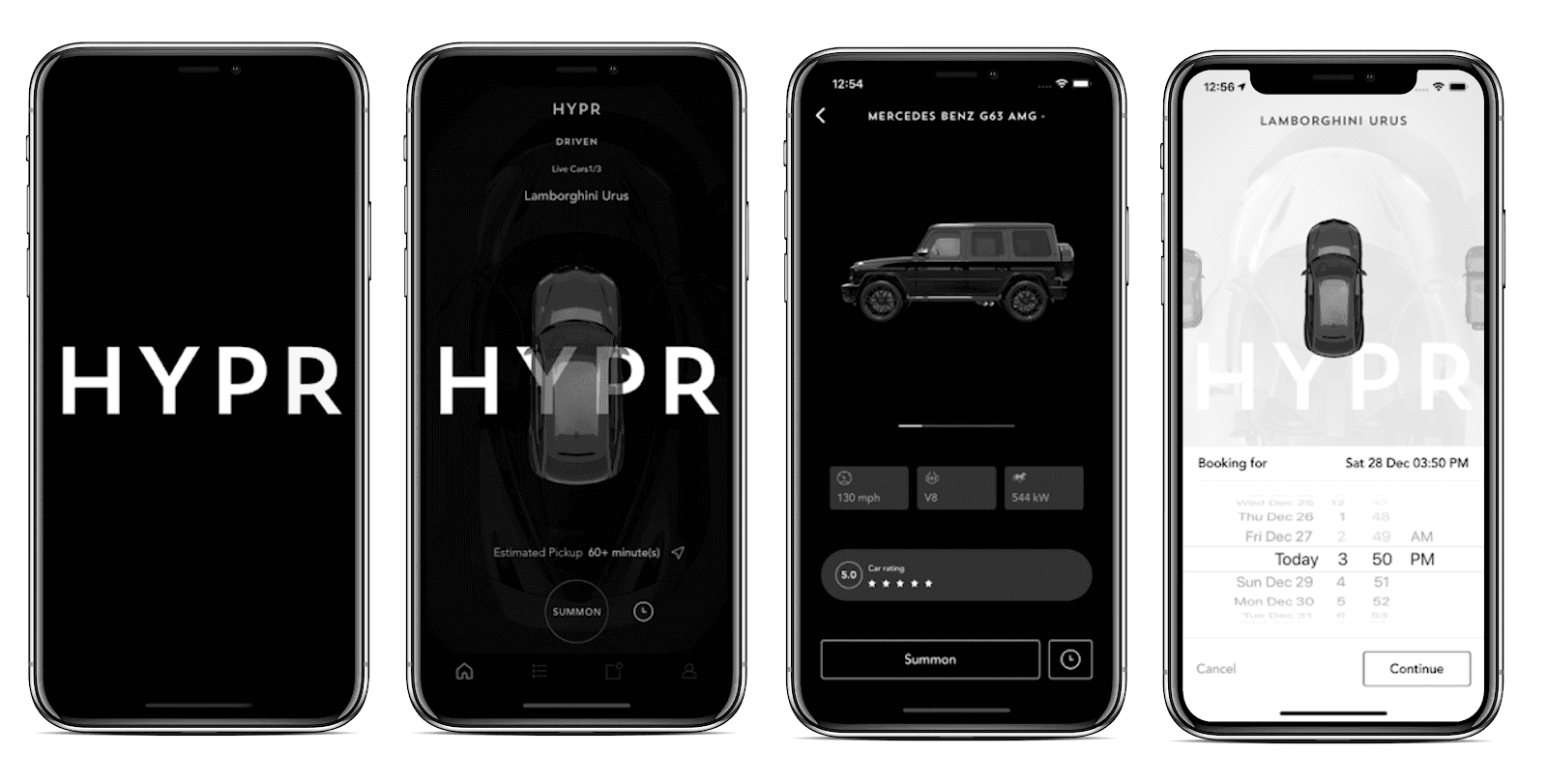
Login and signup (Android from 56 hours, iOS from 56 hours)
Allows passengers to log in to the app with a phone number and verification code sent in SMS. This section also includes personal user details, such as name, registration date, and contact details.
Passenger profile (Android from 32 hours, iOS from 32 hours)
Allows the passenger to edit one’s personal information, change credentials, and password.
Payment methods (Android from 32 hours, iOS from 32 hours)
Includes a list of payment methods (cash or credit card), so the passenger can choose the preferred payment method.
Define user location (Android from 16 hours, iOS from 16 hours)
Allows the app to define the passenger’s location thanks to Google Map API integration.
Request a taxi (Android from 52 hours, iOS from 52 hours)
Allows the passenger to place a taxi request and set the point of destination. Passengers can also view the ride cost, and estimated time. Also, passengers can modify the route by adding several points of destination.
Matching (Android from 16 hours, iOS from 16 hours)
Enables the app to match passengers with drivers nearby.
Browse drivers list (Android from 40 hours, iOS from 40 hours)
Shows a list of drivers with detailed info about cars and reviews.
Trip awaiting (Android from 62 hours, iOS from 62 hours)
Includes a countdown for when the driver will arrive, allows changing ride parameters, tracking the driver’s position, and canceling the ride.
Online payment (Android from 62 hours, iOS from 62 hours)
Allows passengers to pay with their credit card via an integrated third-party payment gateway.
Notification (Android from 48 hours, iOS from 48 hours)
Sends push notifications to the passenger to inform that the driver has approved the request, the driver is nearby; the app has charged money from the credit card, the driver canceled the request.
Driver app features
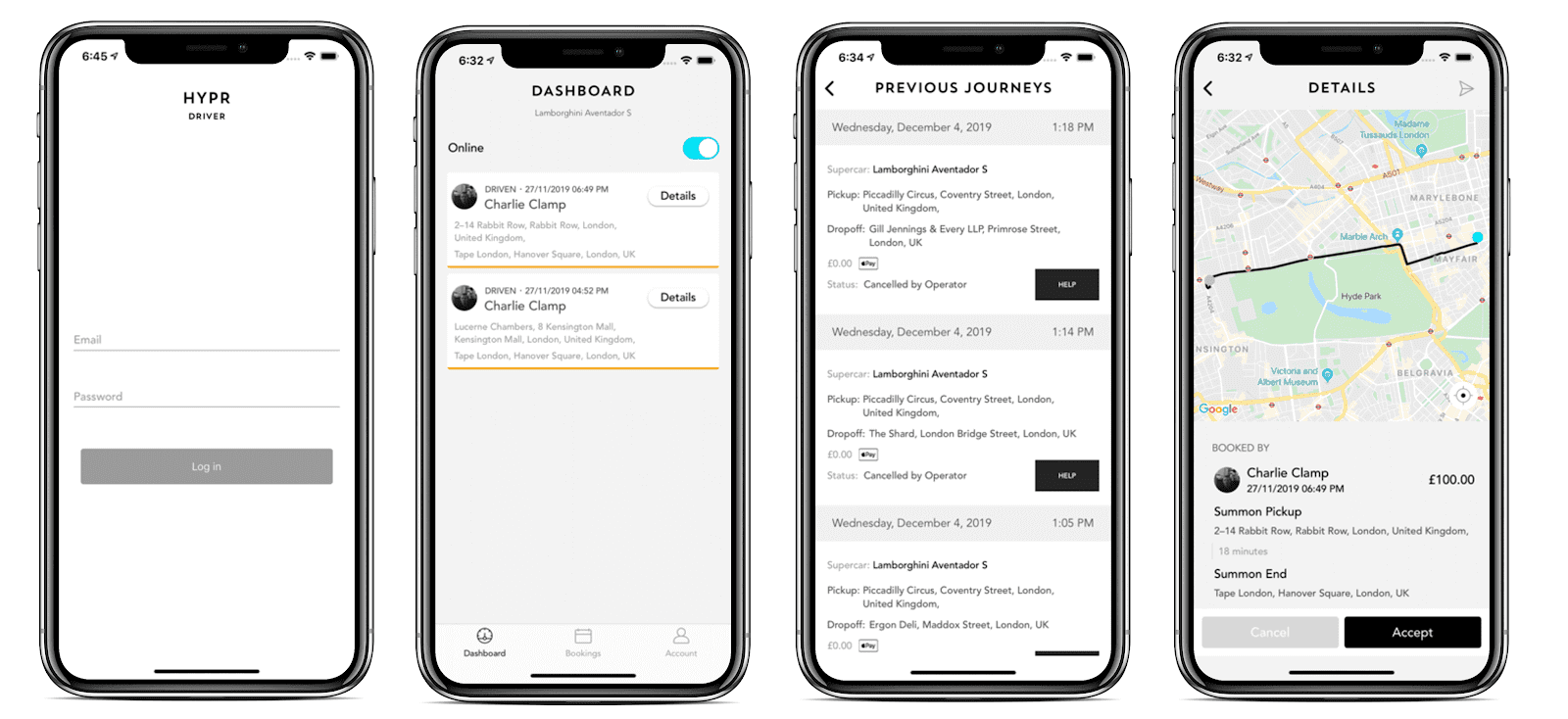
Login and signup (Android from 56 hours, iOS from 56 hours)
Allows drivers to log in to the app by providing the phone number and receiving an SMS with a verification code. The driver should also provide car registration information and verify bank account details.
Driver profile (Android from 48 hours, iOS from 48 hours)
Keeps drivers’ personal information (name, phone number, car details, etc.) and allows the driver to edit it.
Geolocation (Android from 8 hours, iOS from 8 hours)
Helps the driver to navigate to the passenger location with built-in street navigation (Google Map API).
Rides (Android from 42 hours, iOS from 42 hours)
Shows search parameters and a list with the requests’ detailed info.
Trip request confirmation (Android from 32 hours, iOS from 32 hours)
Allows confirming the trip, waiting for passenger confirmation, and canceling the request.
Trip (Android from 36 hours, iOS from 36 hours)
Includes information about the passenger approval of the ride, notifying the passenger that the driver has arrived, and time when the ride started and ended.
Dispatch panel features
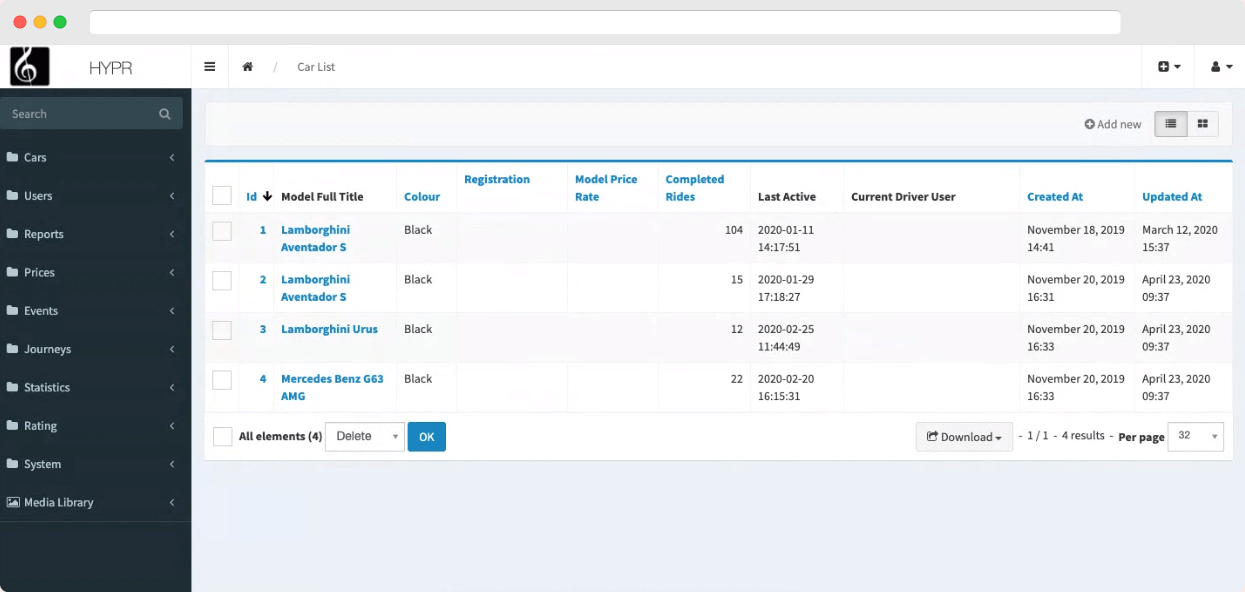
Login and profile (6 hours)
Allows an admin to register in the platform, set the profile, and change the password.
Admins roles (24 hours)
Allows providing different types of access to the platform to other administrators.
Drivers (24 hours)
Allows adding, editing, and deleting a list of drivers, as well as their information.
Passengers (24 hours)
Allows adding, editing, and deleting a list of passengers, as well as their information.
Cars (24 hours)
Lets admins edit the list of cars and their details.
Rates (24 hours)
Allows viewing and editing the driver rating.
Rides (24 hours)
Lets admins view the list of rides and ride details.
Payments (32 hours)
Shows the list of transactions, transaction info such as user bank account, and the ride total.
FUNCTIONAL VS NON-FUNCTIONAL REQUIREMENTS: MAIN DIFFERENCES & EXAMPLES
How much does it cost to develop an app like Uber?
The taxi app development cost depends on several factors. They are the development team’s core tech expertise, the team’s location, and the number of features.
Core tech expertise means the development team delivered the same projects in the past and is aware of technologies to build it. It also means taxi app developers need less time for their initial research, so, you will receive a mobile taxi app at a lower cost and in a shorter period.
The location of the taxi app development team defines the hourly rate of a taxi app developer. You can pay from $100-250 to U.S. and Canada-based development teams for ride-hailing app development services, developers from Eastern Europe, charge from $35-50 for an hour of coding.
As for the app’s functionality, the calculation is simple – the more features you want to add, the higher the development cost of such an app.
If you need a more precise estimate in hours for the MVP’s, here is what The APP Solutions’ developers need to create a taxi app:
- From 416 hours for the passenger app
- From 222 hours for the driver’s app
- From 182 hours for a dispatcher panel
Don’t forget to add PM, QA, and bug-fixing services, which will be 20-30% of the total project cost.
Want to calculate taxi booking app costs?
Use our app cost calculatorBut before hiring taxi app developers, you should consider the problems that could arise during the development process.
Main pitfalls in taxi app development
Here at The APP Solutions, we provided taxi booking app development services to HYPR, a luxury ride-hailing app from London.
During the app development, we faced the following issues:
Transportation of London compliance
Transport of London has a strict policy toward lost and found property, complaints and compliments, vehicle details, bookings records, and private hire drivers.
Thus, to make our taxi app solution compliant with TFL, we tailored its technical documentation to the Transport for London Technical Solution Demonstration Guidance and Technical Documentation Guidance for PHO Applicants.
Price aggregation algorithm
We needed to develop a custom pricing algorithm that calculates the ride’s price based on the driver’s location, the amount of time the driver waits for the passenger, the distance, etc.
Hidden phone numbers
The app’s users are successful and famous people who respect their privacy. Thus, we needed to replace real phone numbers with random phone numbers from the London area.
To learn more about our challenges and solutions in application development, check out the HYPR case study.
SHOULD YOU HIRE APP DEVELOPERS NEAR ME OR OUTSOURCE OVERSEAS?
Developing the best taxi solution that rules the market
The industry of taxi booking applications is more competitive than startup-friendly. But, if you have a unique value proposition, bullet-proof project vision, and a reliable app development company, nothing is impossible.
To create a taxi app for your area, you can use our feature list or ask our business analyst to select features tailored to your value proposition and business goals.
Also, beware of potential pitfalls that could occur in mobile app development.
Despite being a privately-owned business, your taxi app solution must comply with the regulations of local authorities. If you are about to develop an app that provides public taxi services, consider guidance from your local transportation organization and recommendations for user data, privacy policy, and security.
If you are looking for advice on taxi app development, we are here to help. Let us know your business idea, and we will try our best to bring it into reality.